Planting dill in open ground: sowing dates and growing rules
Thanks to its spicy aroma, dill has become a regular regular in any garden. Indeed, dill is one of the healthiest vegetable crops. However, despite the general unpretentiousness, sowing the seeds of this umbrella crop often ends in failure. What is the reason for this phenomenon, and what you need to know in order to successfully grow dill on your site?
Next, we will analyze the main questions regarding when and how to sow dill with seeds in spring, summer and autumn (before winter).
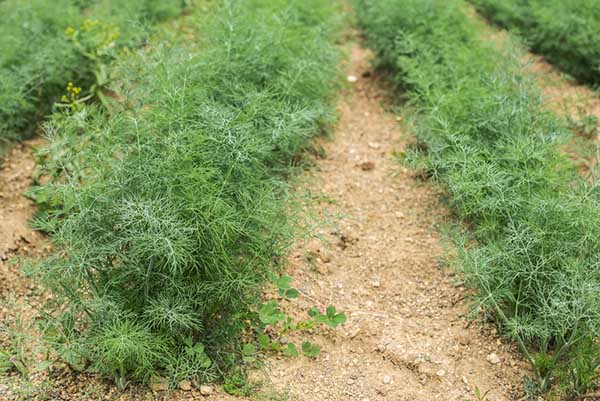
Content
When to plant dill: optimal timing of sowing seeds
Dill is cold-resistant: its shoots appear already at a positive temperature of +3 .. + 4 degrees, the plant is also able to tolerate frosts up to -5 ..- 6 degrees. Accordingly, dill can be sown early, almost immediately after the snow melts.
In other words, the approximate dates for sowing dill in different regions are as follows:
- In the South - in March and early April.
- In the Middle Lane (Moscow region), dill is sown in the second half of April.
- In Siberia and the Urals - in late April and early May.
Advice! If you sow dill in batches, i.e. with an interval of 1-2 weeks, you can constantly have and collect fresh herbs.
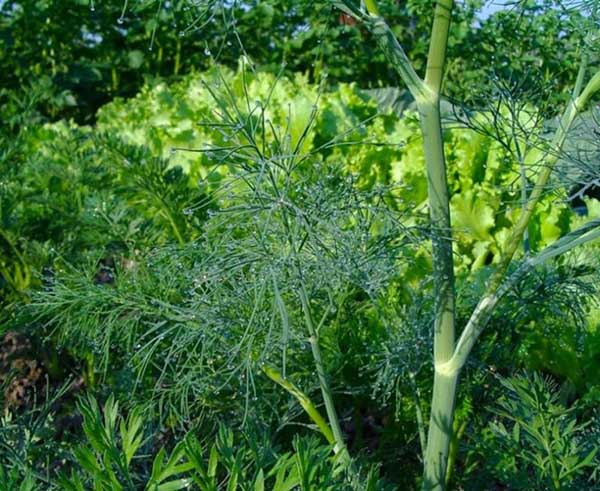
In general, dill can be planted all year round - in spring, summer and autumn (before winter). In this case, the planting time depends on the purpose for which you are growing the vegetable. So, in spring and autumn, dill is planted to get greenery, and in summer - umbrellas.
There are even special varieties that drive greens better, and others - umbrellas.
By the way! Dill can be successful grow all year round at home on the windowsill.
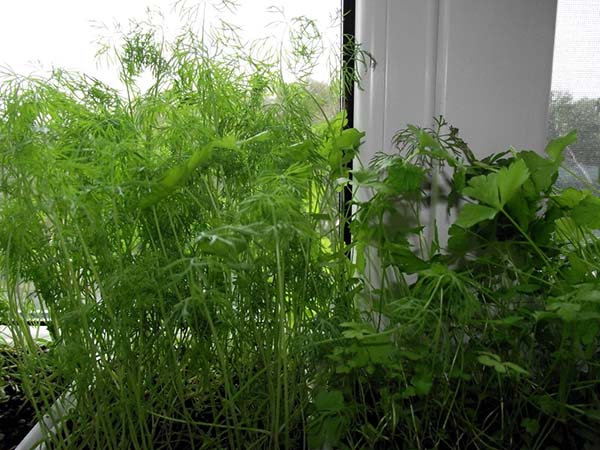
According to the lunar calendar in 2020
Choosing the best date for sowing your crop can help you moon calendar.
Auspicious days according to the lunar calendar, for planting dill in 2020 are:
- February - 1-3, 6-8, 14-20, 28, 29;
- March - 2-8, 26-29;
- April - 1, 2, 11-15, 17-20, 25-30;
- May - 2-4, 6, 9, 10-12, 15-17, 20, 21, 25-29;
- June - 2-4, 7-9, 11-14, 16-19, 30.
But you should also take into account the days of the New Moon and Full Moon, since when sowing at this time, the seedlings are weak and elongated, as well as the period when the Moon is in Aquarius, because it is a barren and dry sign -italicized... So, unfavorable days, according to the lunar calendar, for planting dill in 2020 are the following dates:
- in February - 9,20-22, 23;
- in March - 9,19-21, 24;
- in April - 8,15-17, 23;
- in May - 7,13-14, 22;
- in June - 5,9-11, 21.
Therefore, it is necessary to pre-plan the days for sowing dill seeds and prepare for them in advance.
According to the lunar calendar, from the magazine "1000 Tips for Summer Residents".
How to sow dill in open ground
Presowing seed treatment
Dill belongs to umbrella crops, in other words, its seeds are very tough-like. The fact is that they contain essential oils, which prevent their rapid germination. Therefore, in order to accelerate their germination, dill seeds must be soaked (wash out essential oils).
Advice! The site has detailed material about how to carry out pre-sowing preparation of carrot seeds (for dill everything is the same).
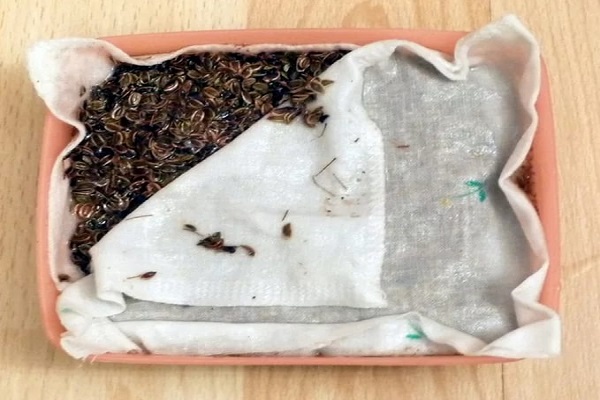
How to choose a place for planting and prepare a garden bed
Dill is a fairly light-loving culture, so the place for the garden should be chosen very sunny, as a maximum, in light partial shade.
Shady places are completely unsuitable for growing dill: in them, the greens turn out to be pale, the stems themselves grow thin and weak, as a result, less essential oils accumulate in the vegetable than if it grew in suitable sunny conditions.
Important! It is believed that due to excessive shading, dill can gain more nitrates.
As a rule, dill is grown exactly outdoors, not in a greenhousewhere it grows less aromatic.
Best predecessors and neighbors
Dill can be successfully grown after the following crops:
- cucumbers, pumpkins.
- cabbage;
- onions, garlic:
- tomatoes, peppers, eggplants, potatoes.
And also after any siderates.
As for whether after which you can not plant dill, then everything is simple: you cannot sow dill after umbrella crops, namely carrots, parsley, celery and, of course, the dill itself.
As for the neighborhood, dill can be sown between rows of garden strawberries (strawberries), onions, cabbage.
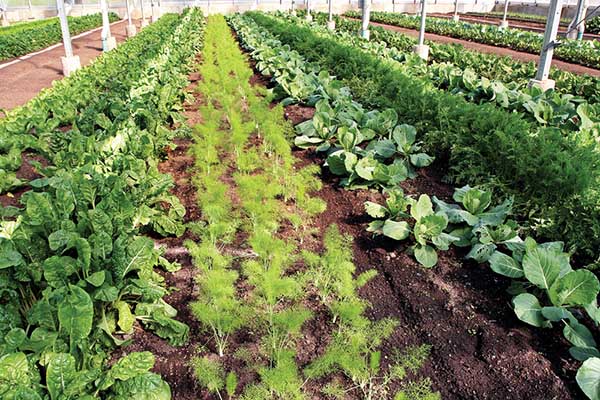
Preparing the garden
For the successful cultivation of dill, a sufficiently highly fertile and cultivated soil is required, naturally, not acidic and not saline (there are fans of watering their plants with saline solutions!).
It will be just fine if you prepare a bed for planting dill in advance, namely, in the fall, add 2-4 kg (half a bucket) of compost or humus for digging, and wood ash and bone meal - 100-200 grams each (all for 1 square meter of the garden).
You also allow the use of mineral fertilizers, then it will be optimal to make superphosphate - 15-20 grams (1 tbsp.spoon) per 1 sq. meter of the garden, as well as potassium sulfate (potassium sulfate) - in the same amount.
Autumn - bring phosphoric and potash fertilizers, and in the spring - nitrogen.
Of course, nitrogen is also needed for the development of dill greens, but it is usually brought in for digging in the spring: 15-20 grams urea (carbamide) or ammonium nitrate.
However, you should always be careful with nitrogen fertilizers, because dill is characterized by a high tendency to accumulate nitrates.
Also in the spring, you will need to thoroughly loosen your dill garden.
Direct planting in open ground
Sowing dill seeds is as simple as possible:
- Naturally, first you need to prepare the bed, loosen the ground.
- Then you can, as an option, sow in rows, i.e. first cut shallow grooves (about 0.5 cm, maximum 1-2 cm), spill them with water, sow seeds and sprinkle with earth.
FROMadvice! The main thing is to try to spread the seeds as evenly as possible over the garden bed.
Why can't you sow too thick?
The dill will come up with a brush, and then it will begin to stretch (it will be frail) from the tightness and, in order to survive, it will quickly throw out the arrow - it will give umbrellas. As a result, you will not get greens, nor sensible seeds.
Therefore, if you want to get powerful bushes with juicy greens, then it is preferable to sow less often.
- Or sow dense carpet on the surface of the soil, lightly cover it with soil and after that make abundant watering.
Worth knowing! Dill seeds germinate better in the light than underground.
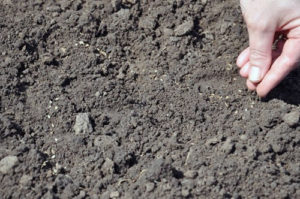
Video: how and when to sow dill
Specificity of sowing dill before winter
Separately, it is worth talking about podzimny sowing of dill.
Thanks to podzimnuyu sowing of dill, seeds in winter will undergo natural stratification and germinate earlier. As a result, you will be able to harvest the first greens 10-14 days earlier than with spring sowing.
Winter sowing has several nuances:
- Naturally, the beds are prepared in advance. Also, the soil is harvested in advance, with which the grooves will be covered.
- As for the timing of sowing dill in the fall, the crop is sown after stable frosts begin, i.e. not earlier than October.
- However, the seeds themselves are sown when the soil is not yet frozen.
- Before winter, they sow in deeper grooves (3-4 cm) than with spring sowing (1-2 cm).
- The sown rows are covered with dry soil.
- Watering is not carried out either before or after sowing.
- Because the germination rate of dill is already not high, in the fall the seeding rate of planting material is increased by 50%.
By the way! The site also has separate articles on how to plant before winter carrot, beets, of course, winter crops garlic and onion, and parsley and sorrel.
How to care for dill after planting
In order for the plant to sprout sooner and start growing greens, dill needs to be provided with comfortable conditions. What kind? Let's talk about this further.
By the way! The optimum temperature for germination of dill seeds is + 15..20 degrees, and for the growth of greenery - already +18 .. + 22 degrees.
Humidity and watering
It is very important that the soil after sowing is constantly moist, but not waterlogged. Therefore, after sowing, the bed can be covered with spunbond or foil, then pressed from the sides with bricks or boards. Under cover, moisture and warmth will be better retained, which will stimulate faster and more successful seed germination. It will also help protect the seeds from birds.
Important! Naturally, when warm and sunny weather is established, the film will need to be promptly removed, otherwise the seedlings may simply burn out. But under spunbond nothing bad will happen.
Already after germination, watering of greens is carried out regularly after the top layer of the soil dries up, while both overflow and overdrying of the soil should be avoided.
On the hottest days, dill watering is carried out by sprinkling, i.e. sprayed.
Top dressing
No fertilizers are applied to the dill during its growing season, since the greens are quite enough nutrients that were introduced during the preparation of the beds.
Pinching
If you want to increase the amount of greenery, then you should pinch its umbrella in time, pinching it to the bosom of the leaf, when it just starts to appear. Thanks to such a pinch, a new stem with leaves (greens) will grow from the leaf axil after a while.

Dill pests and diseases
Very often aphids attack dill, from which it curls (they also say "curliness of dill"), and it can also get sick with powdery mildew.
Naturally, you cannot spray dill with any chemistry, so biological agents come to your aid. So, against pests (aphids), you can use Fitoverm, tobacco dust, and against diseases - Fitosporin.
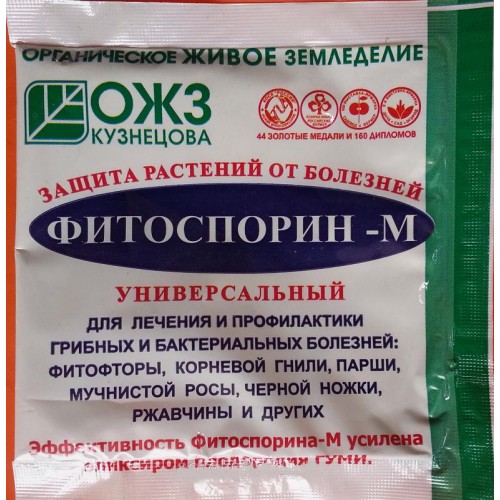
Thus, now you know that planting dill in open ground is one of the simplest garden manipulations. You just need to strictly follow all the recommendations and rules for sowing and growing these fragrant greens.
Interesting! For some summer residents, dill does not grow at all, for others, the situation is the opposite: they cannot get rid of it in any way - it grows like a weed like a carpet throughout the plot.
Video: how to grow good dill

